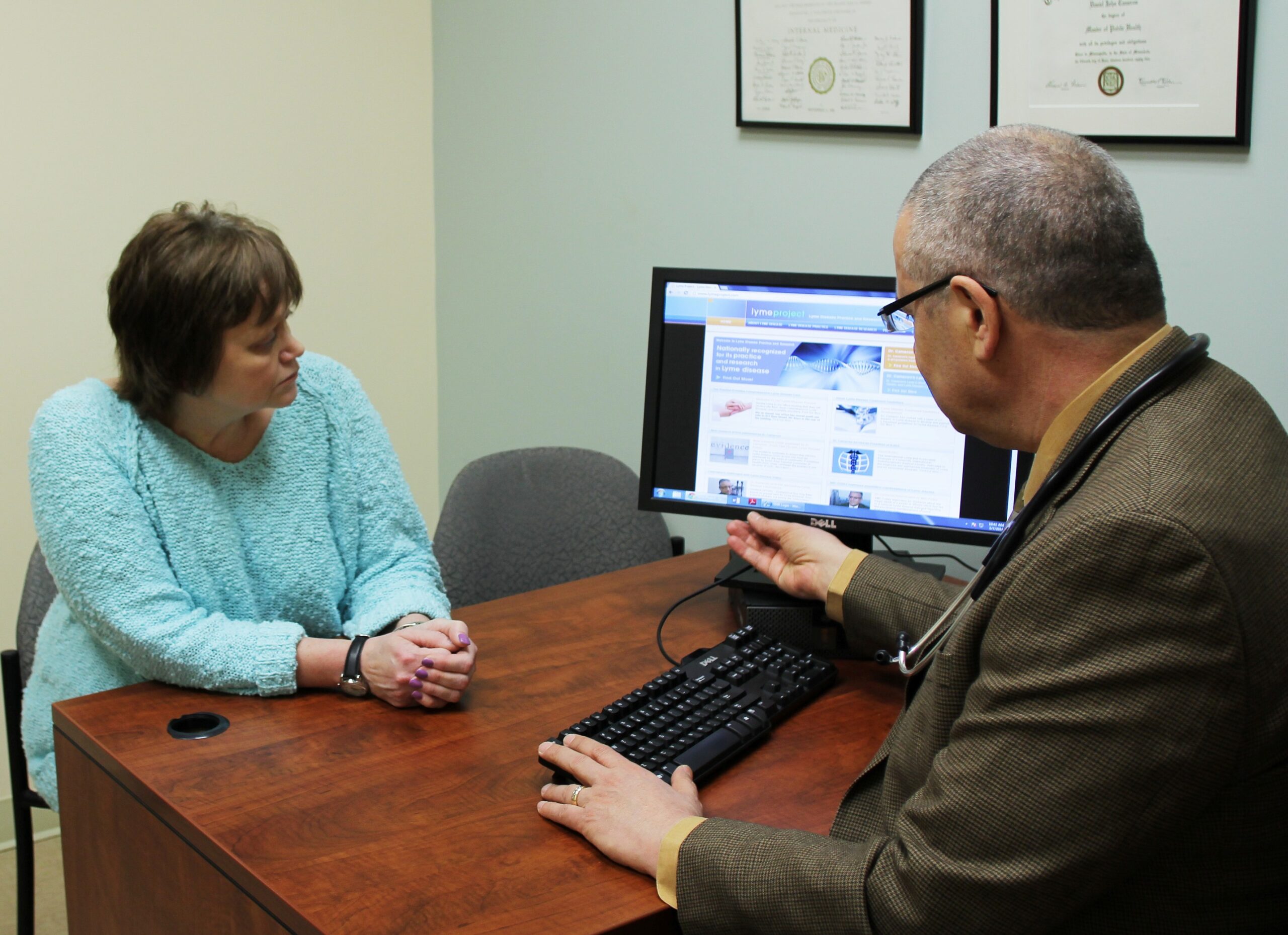Call for your appointment today 914-666-4665 | Mt. Kisco, New York

The goal is to move away from a model of care where the doctor is the sole voice with treatment decisions toward a patient-centered practice that fully involves the patient in each decision at every stage of care. Slowly but steadily, the medical community has responded, adopting a shared decision-making process with a broad range of illnesses, including prostate cancer, diabetes, and even asthma.
Penn State Medical College recently began training its medical students on patient-centered medicine1, while the Mayo Clinic Shared Decision Making National Resource Center encourages the new physician-patient relationship, stating “patients and clinicians have different expertise when it comes to making consequential clinical decisions.”
“While clinicians know information about the disease, tests and treatments, the patient knows information about their body, their circumstances, their goals for life and healthcare.”2
The shared decision-making process empowers patients, giving them a voice in treatment choices. But will clinicians embrace this open approach when treating Lyme disease patients?
Adopting a shared decision-making approach is especially important when treating Lyme disease patients.
Lyme disease and shared decision-making
There are two sets of evidence-based guidelines for the treatment of Lyme disease. The Infectious Diseases Society of America (IDSA)3 and the International Lyme and Associated Diseases Society (ILADS)4 have both published peer-reviewed guidelines for the diagnosis and treatment of tick-borne illnesses, including Lyme disease.
Yet patients who are diagnosed with Lyme disease may only be made aware of the IDSA guidelines. All too often individuals are not given any information regarding ILADS treatment recommendations. And in turn, cannot make a fully informed decision on treatment options.
This is unfortunate given that Lyme disease is the ideal medical condition for physicians to adopt a shared decision-making approach with patients. The illness is complex. It can lead to chronic symptoms. There is no one size fits all treatment regime and a “cookie cutter” approach is inappropriate.
Despite this, the Infectious Diseases Society of America has concluded that the evidence is so overwhelming strong in supporting its guidelines that it fails to discuss the risks versus benefits of the IDSA protocol.
The IDSA guidelines encourage the following:
1) A one-time 200 mg dose of doxycycline for a tick bite
2) 10 to 21 days of antibiotics for an erythema migrans rash
3) Opposition to retreatment
Unlike the IDSA recommendations, the 2014 ILADS guidelines do not designate a fixed duration for antibiotic therapy and instead encourage clinicians to tailor therapy based on the patient’s response to treatment.
Shared decision-making honors both the provider’s expert knowledge and the patient’s right to be fully informed of all treatment options, including the risks versus benefits.
ILADS found the evidence base for IDSA’s three recommendations to be of low or very low quality using Grading of Recommendations Assessment, Development and Evaluation (GRADE) system. A GRADE system grades evidence based on study bias, publication bias, indirectness (generalizability), imprecision and inconsistency. The Institute of Medicine (IOM) recommends GRADE when developing recommendations to ensure a transparent and trustworthy guideline process.
ILADS incorporated risk–benefit assessments and shared decision in the treatment of Lyme disease. Examples taken from the ILADS guidelines include the following:
• Shared decision-making takes into account the best scientific evidence available, clinical expertise and the role of patient’s values and preferences in deciding among available treatment options.
• In addition, the panel recognizes that there is a need for clinicians, in the context of shared medical decision-making, to engage in a risk–benefit assessment that reflects the individual values of the particular patient.
• Furthermore, there is considerable variation among individual patients in their tolerance for risk and in what they regard as a valuable benefit. Patients may also tolerate more risk when they have severe presentations of disease or when there are no other treatment options available.
The ILADS guidelines panel concluded that it is necessary for clinicians to provide patients with treatment options and engage in shared medical decision-making.
The following examples from the ILADS guidelines provide patients with treatment options and engage in shared medical decision-making.
1. Does a single 200 mg dose of doxycycline following a tick bite provide effective prophylaxis for Lyme disease?
Most patients will place a high value on preventing chronic illness. However, some patients will value avoiding unnecessary antibiotics and prefer to not treat a tick bite prophylactically. Hence, treatment risks, benefits and options should be discussed with the patient in the context of shared medical decision-making.
2. Should the treatment of an EM rash be restricted to 20 or fewer days of the first-line oral agents?
While most patients will place a high value on the potential of regaining their pre-morbid health status and preventing chronic illness by continuing treatment, a substantial portion may also value avoiding unnecessary antibiotics.
Hence, treatment risks, benefits and options should be discussed with the patient in the context of shared medical decision-making.
3. Should patients with persistent manifestations of Lyme disease be retreated with antibiotics?
The heterogeneous nature of the patient population seen in clinical practice, particularly with regard to variations in disease severity, Quality of Life (QoL) impairments and aversion to treatment-related risk is likely to affect the risk–benefit assessment.
Although many patients will value the opportunity to improve their individual QoL through antibiotic treatment over the risk of adverse events, others may prefer to avoid the risks associated with treatment.
Hence, treatment options, including their associated risks and benefits, should be discussed with the patient in the context of shared medical decision-making.
The ILADS panel advised, “patients be given sufficient information to make a meaningful choice regarding treatment options.” This goal would be accomplished if every Lyme disease patient were given sufficient information about both the IDSA and ILADS guidelines.
References:
- “Doctors and Patients Team Up for Better Health”, Pittsburgh Post-Gazette, https://www.post-gazette.com/news/health/2015/10/27/Doctors-and-patients-team-up-for-better-health/stories/201510270008
- Mayo Clinic Shared Decision Making National Resource Center, https://shareddecisions.mayoclinic.org/decision-aid-information/decision-aids-for-chronic-disease
- Infectious Diseases Society of America (IDSA), https://www.idsociety.org/uploadedfiles/idsa/guidelines-patient_care/pdf_library/lyme%20disease.pdf
- International Lyme and Associated Diseases Society (ILADS), https://danielcameronmd.com/lyme-treatment-guidelines-new




